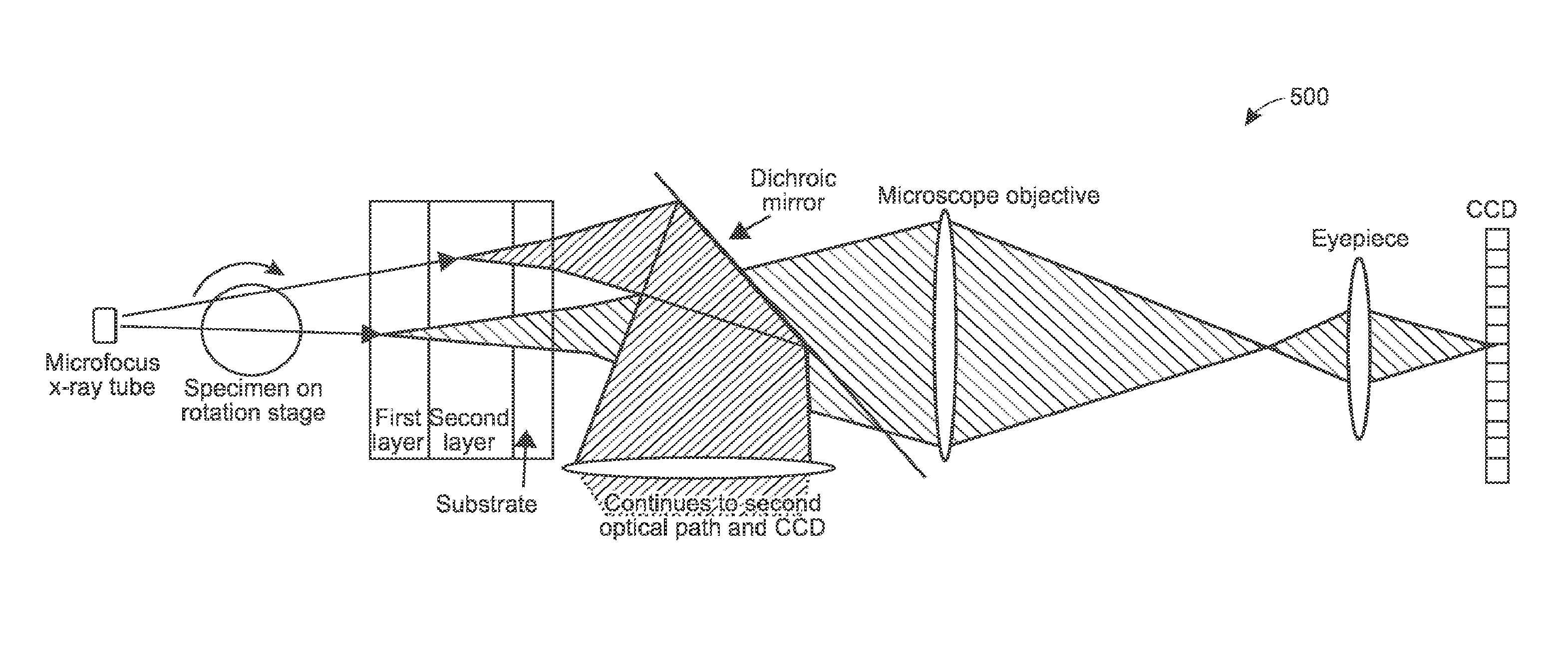Color x-ray histology for multi-stained biologic sample
a multi-stained, biologic technology, applied in the field of x-ray imaging, can solve the problems of difficult to achieve true 3d information and high throughput, laborious imaging physical slices of specimens, and inability to achieve satisfactory 3d representations
- Summary
- Abstract
- Description
- Claims
- Application Information
AI Technical Summary
Benefits of technology
Problems solved by technology
Method used
Image
Examples
Embodiment Construction
[0030]Various examples are provided of 3D X-ray imaging techniques that use multiple heavy-metal stains of model organisms or other biologic targets and multiple captured datasets to produce stain-based images, where each dataset contains different X-ray energy information.
[0031]Generally, these techniques may be implemented using different types of X-ray illumination sources, including monochromatic X-ray energies, such as those generated by synchrotrons, and polychromatic (wide spectrum) X-ray energies, such as generated by X-ray tubes. Samples may be illuminated multiple times or a single time, depending on the type of X-ray energy and the type of X-ray detector. Numerous different examples are provided, and persons of ordinary skill will appreciate yet others in light of the following.
[0032]FIG. 1 provides process 100, in accordance with an example of the present techniques. In this example, the sample is a model organism, although the process (as with any process herein) may be...
PUM
| Property | Measurement | Unit |
|---|---|---|
| thickness | aaaaa | aaaaa |
| thickness | aaaaa | aaaaa |
| thickness | aaaaa | aaaaa |
Abstract
Description
Claims
Application Information
 Login to View More
Login to View More - R&D
- Intellectual Property
- Life Sciences
- Materials
- Tech Scout
- Unparalleled Data Quality
- Higher Quality Content
- 60% Fewer Hallucinations
Browse by: Latest US Patents, China's latest patents, Technical Efficacy Thesaurus, Application Domain, Technology Topic, Popular Technical Reports.
© 2025 PatSnap. All rights reserved.Legal|Privacy policy|Modern Slavery Act Transparency Statement|Sitemap|About US| Contact US: help@patsnap.com



